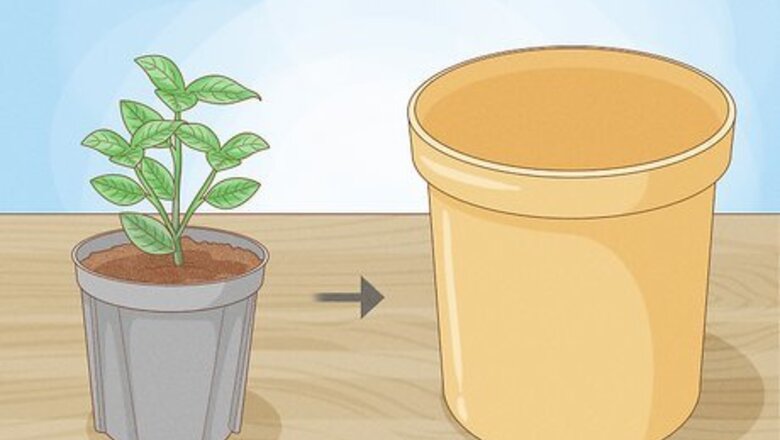
views
Growing Gardenias in Pots
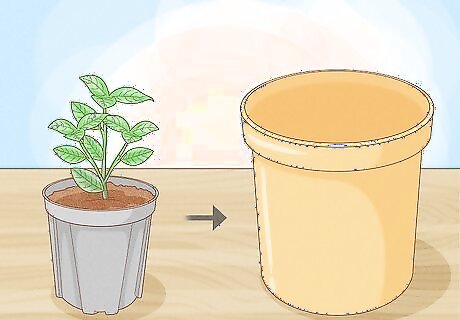
Pick out a pot that is larger than your plant. When you plant your Gardenia in a pot, aim to put the plant into a pot that is roughly four inches larger than the pot you purchased it in. You should retain as much of the original soil as possible. Getting a bigger pot will allow your Gardenia the space it needs to grow.
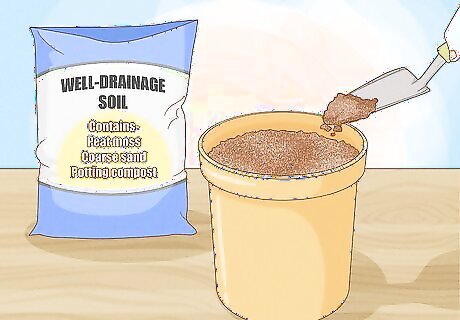
Fill your pot with soil that drains well. Gardenias do best in soil that drains, rather than soil that allows puddles to form. Some gardeners suggest a mix of peat moss, coarse sand and potting compost (choose a compost for acid-loving plants, which is also known as ericaceous compost).
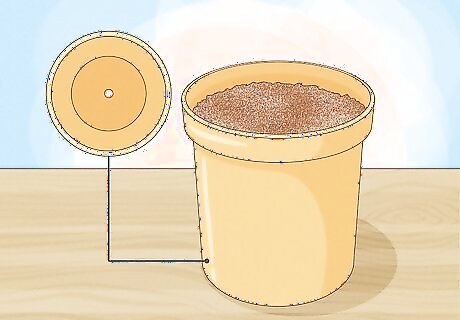
Make sure your pot has drainage holes. Choose a pot with very good drainage holes. Make sure the pot is big enough for the plant so the roots don't clog up the drainage holes. Don't stand your pot in a trough or saucer as doing this can retain water, which makes the roots remain wet.
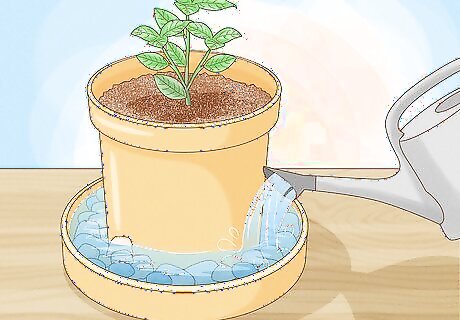
Give your Gardenia the humidity it needs. Gardenias need humidity to survive. You can help provide a humid atmosphere by laying stones or pebbles under the plant pot. Spray the stones with water every morning; the water will slowly evaporate throughout the day, which will create humidity for your plant. Alternately, get a shallow tray that is wider than the pot. Put some stones or gravel in the tray and add water. The water should not reach the top of the stones and should not touch the plant pot. Stand the Gardenia pot on the stones. The bottom of the pot must not touch water. Keep the water topped up as the moisture will evaporate providing some humidity for the plant above.
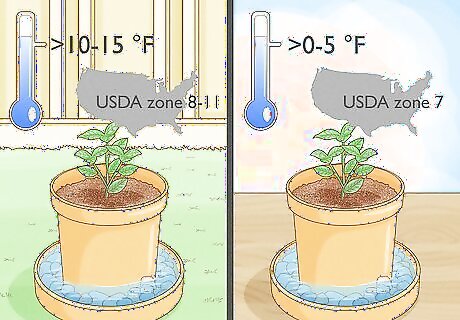
Consider keeping your Gardenia outdoors. Gardenias can be grown outdoors in US zones 8 through 11, where temperatures generally don't drop below 10- or 15-degrees Fahrenheit (-12.2 to -9.4 degrees Celsius). In warmer zones it will be necessary to shade the plant from the main heat of the summer sun. Make sure you water the plant and attend to the humidity as described in the previous step. Move the pot indoors in zone 7 (where temperatures reach 0- or 5-degrees Fahrenheit, or -17.8 to -15 degrees Celsius).
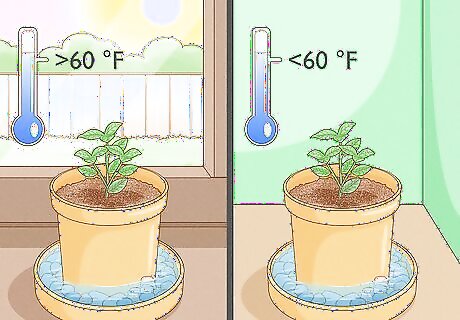
Think about growing your Gardenias indoors. The area where you place your pot will depend on the temperature you keep your house at. If you keep your house at a room temperature above 60 degrees Fahrenheit (15.5 degrees Celsius), you should place your Gardenia on a bright window ledge (though the plant should not be in direct sunlight). If the house is below 60 degrees Fahrenheit (15.5 degrees Celsius), Gardenias can tolerate some shade or darkness. They'll stand temperatures that drop down to about 35 degrees F (1.6 degrees C) in the shade but won't enjoy going below 20 degrees F (-6.6 degrees C).
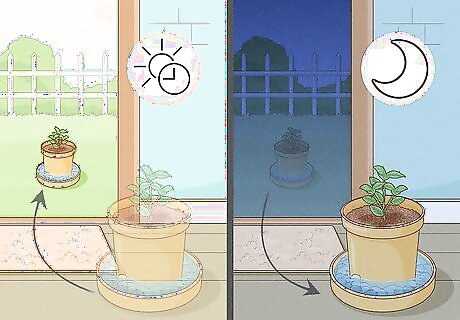
Help your plant to adjust to its new location. If you are moving your potted Gardenia from indoors to outdoors, or the other way around, let it acclimate slowly to its new position. For example, when moving a plant outdoors, put it outside during the day but move it back indoors at night for two to three weeks before leaving it out all day and night.
Caring for Gardenias
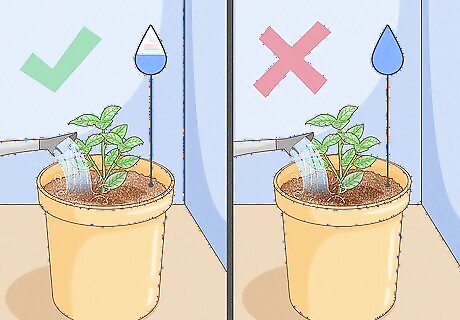
Do not overwater your plant. Only water your plant when the soil is dry below the surface. Water the soil and not the foliage. The soil should never be soddening and the water should always drain away easily. Try to water with rainwater rather than tap water, if possible. Usually, you should water your gardenias once or twice a week, especially when it's hot.

Feed your Gardenias regularly. Gardenias need regular fertilizing. Feed your plants every three weeks or monthly during the spring or summer growing period. Try to use a fertilizer for acid-loving plants, which you can purchase at your local supply store.
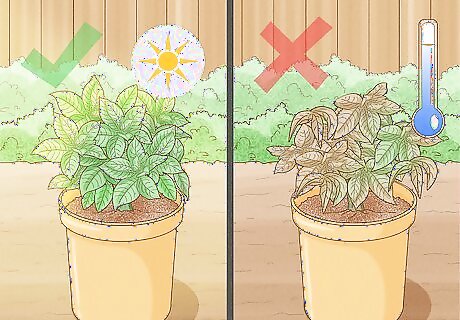
Keep your local climate in mind when growing Gardenias. While it's possible to bring Gardenias indoors for the cooler seasons, they still require a lot of light and humidity that's difficult to achieve indoors. In favorable climates they will die back in cooler months but return and bloom again. If you are really struggling to grow Gardenias the local climate may not be right for them, either indoors or out.
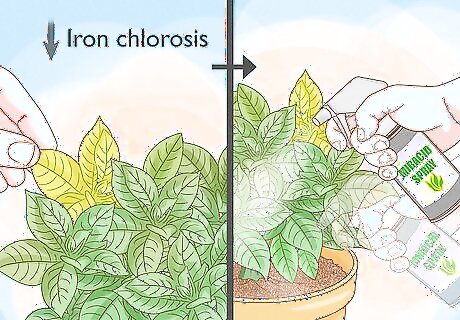
Look out for iron chlorosis. Light green or yellow leaves with darker veins (especially on new growth) indicate iron chlorosis in Gardenia. Try treating this problem with an iron chlorosis spray like Miracid.
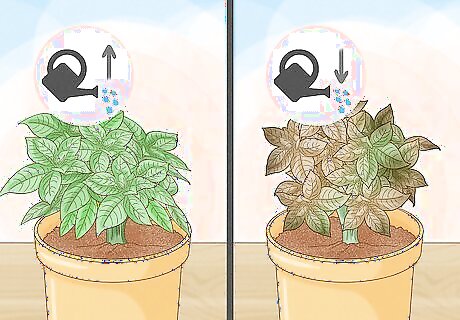
Watch out for signs that your plant has been overwatered. Leaf drop, or yellowing leaves, indicates the plant has been given too much water. If the plant has too little water, you'll see the leaves turn brown at the tips.
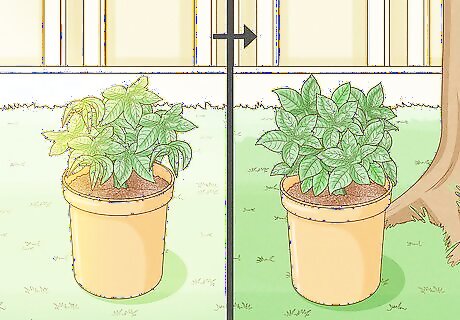
Recognize signs that your plant is receiving too much sun. If you see an outdoor Gardenia plant wilting, it may be getting too much midday sun. Move your plant to a shadier location during the summer midday heat. Mist your plant several times a day until the plant recovers.
Overwintering Gardenias
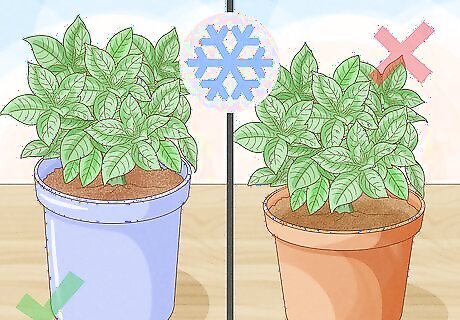
Plant your Gardenias in lighter containers if you plan to bring them inside during the winter. If you expect to have to bring Gardenias in over winter because you live in a cold climate, do yourself a favor by planting them in lighter container materials. You may otherwise find it too difficult to try to bring the heavy pots in for the winter. Light materials include plastic (you can put the ugly plastic pot inside a more attractive pot). You could also put your pot on a pot trolley to make heavier pots easier to move.
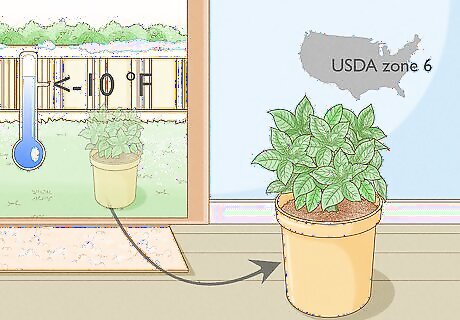
Take caution when living in cold climates. In zones 6 and cooler it's important to bring Gardenias outside only in warmer temperatures. The rest of the time they will need to be in heated spaces indoors. Zone 6 temperatures can drop down to -10 degrees Fahrenheit (-23.3 degrees Celsius).
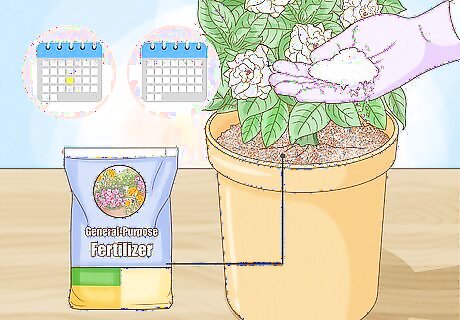
Continue feeding Gardenias over winter. A general-purpose fertilizer given over six weekly intervals is ideal. Reduce watering over winter but do not allow the plant to dry out completely.




















Comments
0 comment